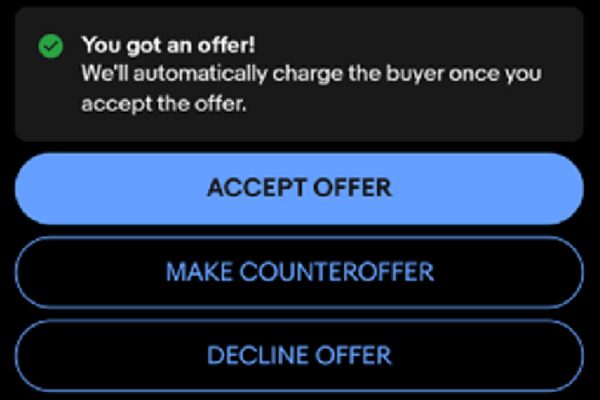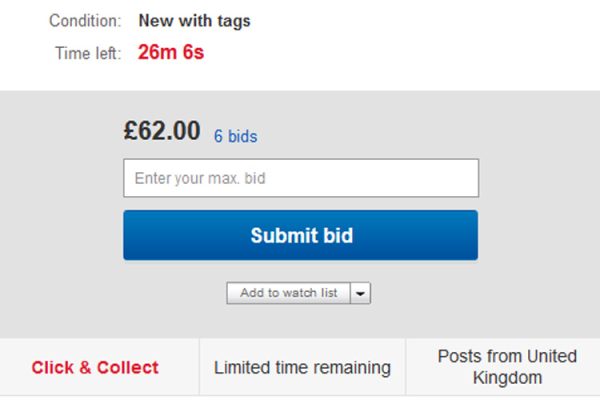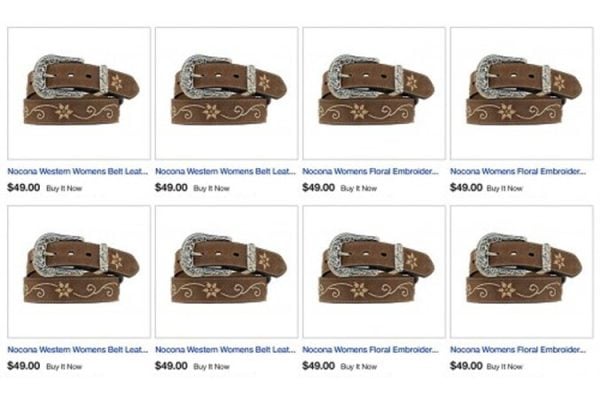 Auctionbytes has some interesting comments from an eBay rep on how the new eBay.com duplicate auctions policy is being enforced.
Auctionbytes has some interesting comments from an eBay rep on how the new eBay.com duplicate auctions policy is being enforced.
Earlier this month, eBay.com made an addition to its to disallow duplicate auctions with low sell-through rates. Here’s the new bit:
If you have too many duplicate auction-style listings that don’t end in sales, you may be in violation of this policy. If you don’t have a strong record in converting these types of duplicate listings into sales, you’ll need to remove the listings, and you won’t be allowed to list duplicate auction-style listings in the future. If you do, we may remove the listings or give them less visibility in search results. If you continue to list duplicate auction-style listings, you may lose your selling privileges or your account may be suspended.
Note that this doesn’t specify how many “too many” is, or what a “strong record” on sales conversions might be.
There’s been no official announcement of this policy and it doesn’t seem to have been included in the either.
Hidden away is a little more information:
Before you can have duplicate auction-style listings, you’ll need to achieve and maintain at least a 30% average sell-through rate for all of your duplicate auction–style listings by the deadline indicated in your notification. That means at least 30% of your ended duplicate auction-style listings must sell by your deadline week and you must at least maintain that rate going forward. Otherwise, your duplicate auction-style listings may be subject to removal. Continuing to list duplicate auction-style listings while your sell-through rate is less than 30% could lead to selling restrictions or account suspension.
So there we go: 30% it is.
I’ve got to say, I’m broadly in favour of this policy. As a buyer, duplicate listings are a pain to scroll through whether they’re in auction format or buy-it-now. As a seller… well, if it isn’t selling, don’t waste your time and shoppers’ listing and listing and listing: liquidate the stock and move on to something that *will* sell.
What I’m not in favour of is the way this policy appears to be being implemented. With no general announcement, the first (it seems) a seller is going to know is when they get a call to say they’re violating the policy. This is no way to treat your customers. eBay, yet again, appear to forget that sellers invest in their eBay businesses: time, to create listings, and money, in stock. If they’re going to change the way that stock can be sold, the very least they should do is give a decent notice period so sellers can work out other strategies (and other channels).
For the avoidance of doubt, this policy is in place only on eBay.com. It does not (yet) affect sellers on eBay UK, where the allows up to 15 identical auctions.










13 Responses
I don’t like the policy because the 30% sell through rate is going to be out of control of the seller. It is also easily defeated by shill bidding on listings that aren’t going to sell. I can understand the reasoning behind it though.
A much simpler and fairer solution would be to restrict sellers to one auction per item ending per calendar day. This would space out the duplicate listings and let best match take care of the clutter automatically with its sorting preference weighted on ending times for auctions.
Is an auction that sells at the start price an auction?
Or is it a BIN by another name?
The policy should in addition be applied and extended to auctions that sell at the start price with 1 bid. And to discourage the the one bid shill bidder scenario eBay should limit the sale cancellation/fee refund claims to 5% of auction sales (ie 1 in 20 auction sales). If nothing else the eBay fees earnt can be used to subsidise sellers who don’t take the michael (Ha! Ha! eBay will of course keep the revenue!).
It’s a good rule seeing loads of identical ads is a real turn off for buyers I reckon, but already we see confusion- a duplicate listing is a duplicate listing right? well no not if it sells well!!!!. I remember preparing all my listings last time only to find that the rule was not aplied to UK. I’m bettin it will go ahead this time.
The problem comes if you are a seller of something where identically named items are not identical.
IE lets say I am selling super nintendo systems. One is not yellowed at all (quite unusual actually) one has a very light tinge and one has a more normal yellowing of the plastic.
Selling those 3 items as individual lots is not a duplicate listing.
I could be selling 3 Barnstorming Atari 2600 game carts — one is in really nice shape — one has light actiplaque — and one in in more typical condition.
Same issue.
Be interesting to see how this pans out.
If the items title has different figures in it, that is the only way (I can see) how they would note duplicate listings.
I have noticed lately many Top rated sellers are using duplicate listing to bump lower rated sellers down the best match search list. One I looked at today, has 22 BIN items (all the same) on the 1st search page.
This is tactical selling bumping competition down the list, by using their TRS status in search.
Maybe the duplicate listing rule should only be applied to NEW items.
It is extremely unlikely that USED items will be duplicates because of condition variations.
Will sellers of NEW items be willing to flag these items as USED to get around a duplicate listing policy?
What of a seller who discovers a collection of ex shop stock mint Elvis Presley singles of Jailhouse Rock with a picture cover? Clearly these will be sought after so what is wrong with several identical listings?
I guess as they would all sell then the seller would not be impacted by the above eBay policy.
When you read it the eBay policy actually only appears to come into play if you list duplicate items that don’t sell. If all your duplicate listings sell then you will not be impacted.
This in my opinion will benefit the outlet type sellers.
Because the 30% requirement wont be fair as we all don’t have equal visibility
Thus the sellers with the best visibility should have more of a sale through rate.
The sceptics would say this is another tool to get rid of the small sellers.